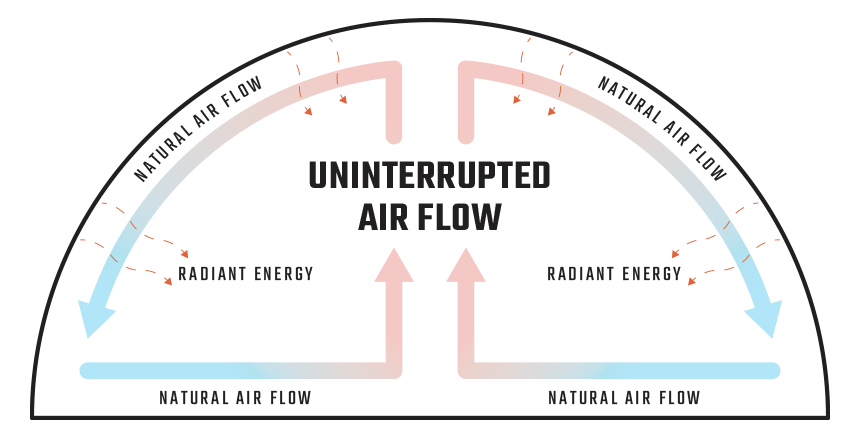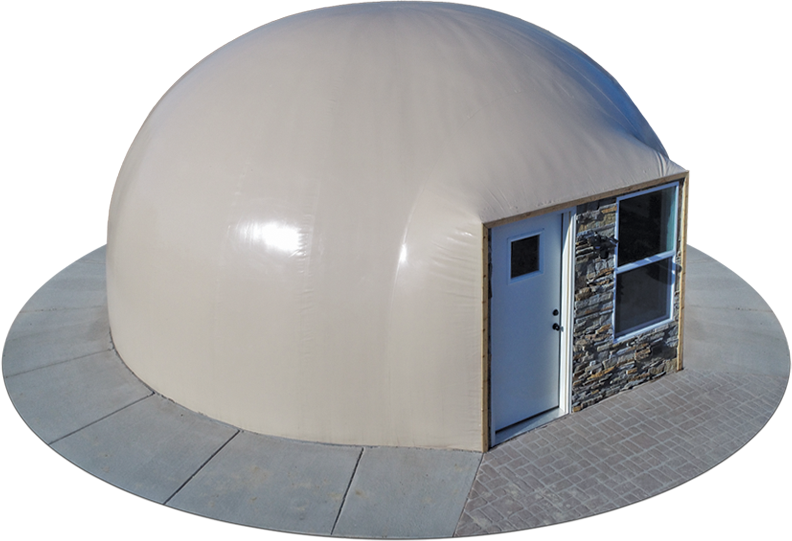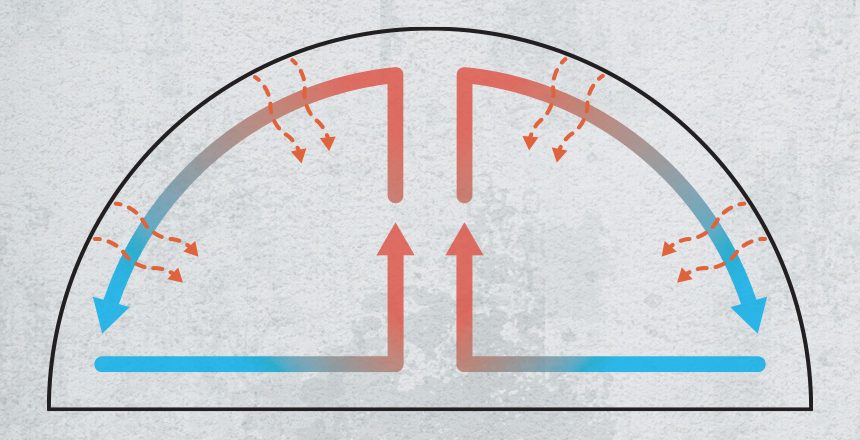Concrete domes are truly unique structures, and they hold many unique properties when compared to conventional homes and facilities. Their energy efficiency is by far one of the most significant benefits. And because of their efficiency, choosing the right HVAC for concrete domes is very different from similar-sized conventional structures.
Why HVAC for Concrete Domes is So Different
While rectangular homes may be the standard, dome homes are much more energy-efficient. Their shape and construction result in big-time savings over the life of a dome. And HVAC for concrete domes is different because of these qualities.

Aerodynamic Design
For example, conventional homes contain cracks and seams that compromise energy efficiency, whereas domes have no joints or cracks. For conventional homes, this means a more robust HVAC system to keep up with the inefficiencies. But HVAC for concrete domes doesn’t have to compensate for these losses.
Even a multi-dome floorplan (connected dome structures that provide a unique layout for living space, bedrooms, garage, or other spaces) is under a seamless shell. This unbroken surface, along with high-grade polyurethane foam insulation throughout the structure, accounts for, in large part, a dome’s incredible energy efficiency.

Air Flow in a Dome
A conventional home loses much of its radiant energy because of square walls that do not facilitate airflow, compounded by the many opportunities for conditioned air to escape. On the other hand, domes retain radiant energy due to their inherent properties.

The rounded shape of a dome promotes natural airflow throughout its structure. Warm air rises to the top and unloads heat into the dome’s shell. As the air cools, it flows back down towards the floor. This uninterrupted airflow means that there is only a two to four-degree variance between the top and bottom of the dome. Compare these numbers to the variation between a conventional home’s basement and attic, and you’ll understand the power of retained radiant energy and unimpeded airflow.
Natural airflow within a dome means HVAC units require significantly less energy to condition their interior environments. And the high-grade polyurethane foam insulation ensures that no matter how hot or cold it is outside, the inside temperature of a dome remains constant.
HVAC for Concrete Domes, By The Numbers
A well-insulated conventional home in the northern US requires about ten watts of heat per square foot, which means a 1200 sq ft home requires 12,000 watts of heat. A dome home of the same square footage only requires two watts of heat per square foot.
Most standard heaters are designed for a lot more than 2 watts of heat per square foot. So we recommend putting small electric heaters throughout the house.
Cooling a conventional home can be accomplished with about 1 ton of air conditioning per 1,000 sq. ft. A standard air-conditioning system usually starts at a minimum of 1.5 tons. Therefore, a 1500 sq ft dome only requires a single 1.5 ton AC unit. That means budgeting for HVAC for a concrete dome is a far less expensive endeavor.
A Hypothetical Dome
Imagine a 40 ft x 15 ft dome with all the rooms on ground level. The total living area is 1256 sq ft. Can you guess the most efficient and cost-effective method of achieving a comfortable indoor living environment?
This hypothetical dome would need about 18,000 BTU of cooling during the summer and about five kWh of electric heat. Alternatively, we could utilize four window air conditioners and four electric heaters to heat and cool the dome.
Whatever we choose, our hypothetical dome will be very energy efficient because of the reasons stated above in this article. A conventional home will cool to 20 degrees below the ambient outdoor temperature. In comparison, a dome will hold more than 30 degrees below ambient outdoor temperature. That means on the hottest day of the summer (say about 105 degrees), a conventional home will be a steamy 85 degrees indoors while a dome will maintain a comfortable 70 degrees or less.
When it comes to maintaining a consistent and comfortable year-round temperature in your home while saving money in the process, it’s difficult to ignore the clear HVAC benefits of a concrete dome.

Tour Our Dome Home
If you’d like to learn more about concrete domes from the team that builds these amazing structures or schedule a tour of our demo dome in Sioux Falls, click here or call 605-368-5477 today!



